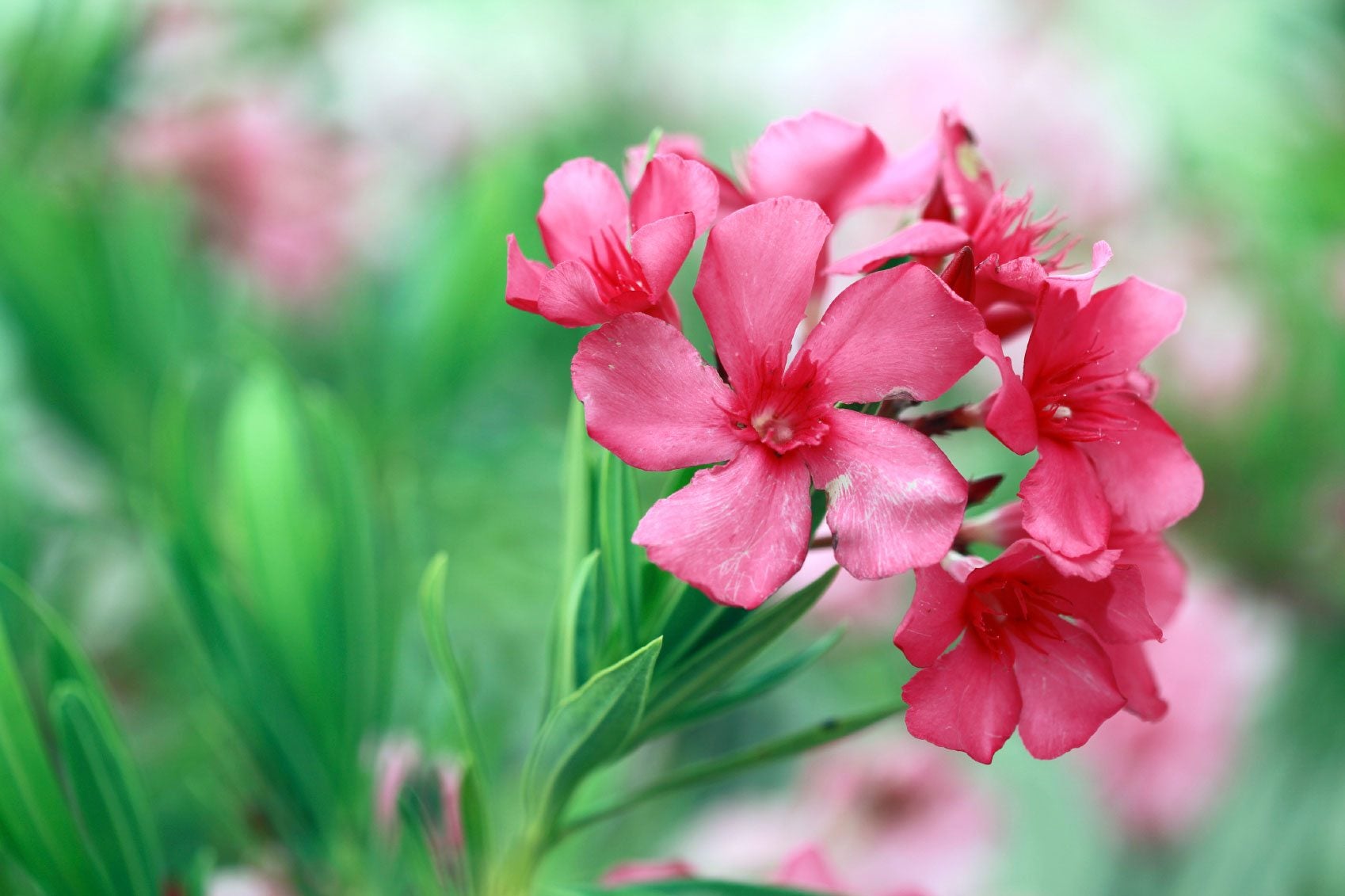Oleander Care: Tips For Growing Oleanders In The Garden


Oleander plants (Nerium oleander) are among the most versatile of shrubs, with dozens of uses in southern and coastal landscapes. They tolerate a wide range of conditions, including difficult soil, salt spray, high pH, severe pruning, reflected heat from pavements and walls, and drought.
The one thing they can't withstand, though, is winter temperatures below 20 degrees F. (-7 C.). However, in cooler climates, you can grow an oleander plant in a container and bring it indoors when temperatures drop.
Growing Oleanders in the Garden
The first thing you should know if you want to grow an oleander plant in the garden is that you need to avoid growing oleanders in home landscapes where children and pets play.
All parts of oleander shrubs are poisonous and the smoke from burning oleander debris is toxic. Ingesting even a small amount of foliage, flowers, or shoots from an oleander plant can be fatal. Contact with the foliage and flowers can cause severe skin irritations and allergic reactions as well. Always wear long sleeves and gloves when working with the shrub.
Oleanders bloom from spring until the end of summer, producing large clusters of flowers in shades of yellow, white, pink, or red at the tips of the stems. They grow and bloom best in full sun, but they will tolerate light shade.
Oleanders are considered hardy in USDA plant hardiness zones 8 through 10, but they are sometimes damaged by frost in zone 8. The shrub usually recovers, even if killed nearly to the ground. Prune and reshape the damaged parts of the shrub to encourage new growth.
How to Care for Oleander
Oleander care is easy, and this makes the shrub popular with highway departments. You'll often see masses of oleander shrubs planted in highway beautification projects where they provide an outstanding display of long-lasting flowers with very little maintenance.
Gardening tips, videos, info and more delivered right to your inbox!
Sign up for the Gardening Know How newsletter today and receive a free copy of our e-book "How to Grow Delicious Tomatoes".
Even in the garden, oleander shrubs require minimal care. Although the shrubs are drought tolerant, they look their best when they are watered during dry spells. However, take care not to overwater them. Yellowing leaves indicate that the plant is getting too much water.
If the soil is poor, feed the plant lightly with a balanced fertilizer during its first spring. Once established, oleander shrubs don't require routine fertilization. Pinching out the tips of young stems reduces legginess and encourages the shrub to branch out.
Pruning oleanders can also be performed. Prune to remove damaged or diseased limbs any time, and prune to shape the shrub in late fall.

Jackie Carroll has written over 500 articles for Gardening Know How on a wide range of topics.
-
 Looking For Plants To Give You The Soft And Fuzzies? Try These 5 Fuzzy Leaf Plant Options
Looking For Plants To Give You The Soft And Fuzzies? Try These 5 Fuzzy Leaf Plant OptionsLovers of texture, drama, silver foliage and tactile plants will adore these special sensory garden additions. These fuzzy leaf plant options will leave you all aglow
By Susan Albert
-
 Get Ready For A Summer Of Hummers! Grow These Full Sun Hummingbird Plants and Flowers
Get Ready For A Summer Of Hummers! Grow These Full Sun Hummingbird Plants and FlowersIf you’re lucky enough to enjoy a sunny backyard, make sure you are maxing out on your pollinator opportunities and grow these full sun hummingbird plants and flowers
By Tonya Barnett